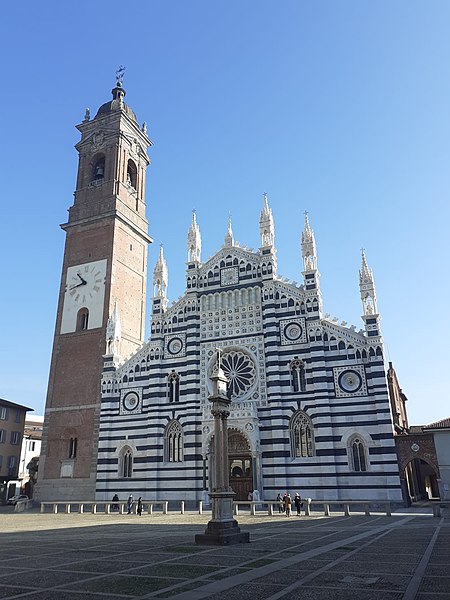The Monza ampullae form the largest collection of a specific type of Early Medieval pilgrimage ampullae or small flasks designed to hold holy oil from pilgrimage sites in the Holy Land related to the life of Jesus. They were made in Palestine, probably in the fifth to early seventh centuries, and have been in the Treasury of Monza Cathedral north of Milan in Italy since they were donated by Theodelinda, queen of the Lombards,. Since the great majority of surviving examples of such flasks are those in the Monza group, the term may be used to cover this type of object in general.
A similar style of 6th-century pilgrim ampulla, here from the shrine of Saint Sergios in Syria. 5.4 cm (2.1 in) high, 3.81 cm (1.5 in) wide, 1.59 cm (0.6 in) deep
A flask from Bobbio, with the Women at the empty tomb
Early 6th-century mosaic in San Apollinare Nuovo, Ravenna with a depiction of the Women at the empty tomb similar to that on ampullae, though reversed and with no censer.
Modern pilgrims at the aedicule over the tomb of Christ in the Church of the Holy Sepulchre.
The Duomo of Monza, often known in English as Monza Cathedral, is the main religious building of Monza, Italy. Unlike most duomi, it is not in fact a cathedral, as Monza has always been part of the Diocese of Milan, but is in the charge of an archpriest who has the right to certain episcopal vestments including the mitre and the ring. The church is also known as the Basilica of San Giovanni Battista from its dedication to John the Baptist.
Façade of the Duomo
Lunette over the portal
The rose window
Frescoes in the Theodelinda Chapel








